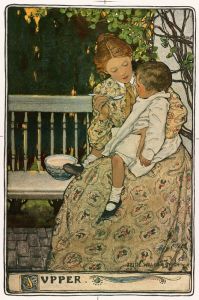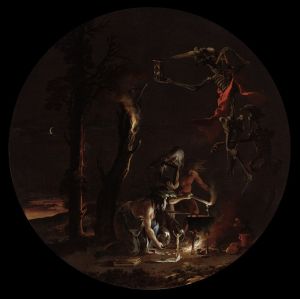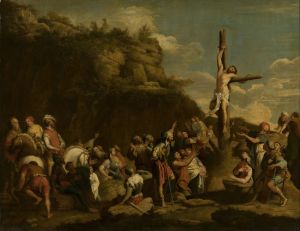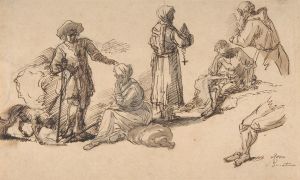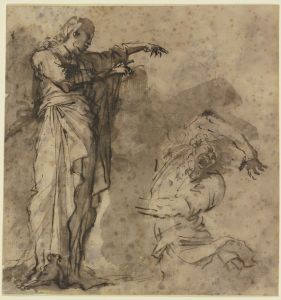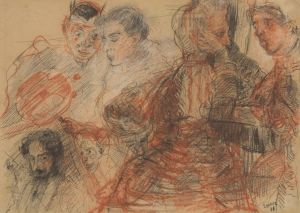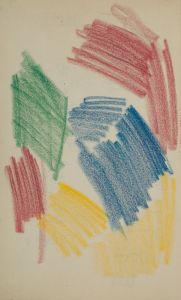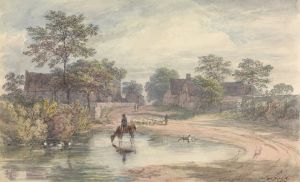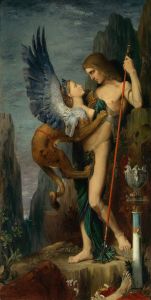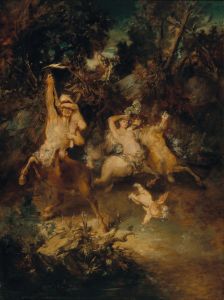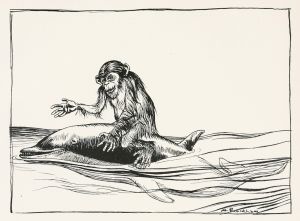
Landscape with Figures
A hand-painted replica of Salvator Rosa’s masterpiece Landscape with Figures, meticulously crafted by professional artists to capture the true essence of the original. Each piece is created with museum-quality canvas and rare mineral pigments, carefully painted by experienced artists with delicate brushstrokes and rich, layered colors to perfectly recreate the texture of the original artwork. Unlike machine-printed reproductions, this hand-painted version brings the painting to life, infused with the artist’s emotions and skill in every stroke. Whether for personal collection or home decoration, it instantly elevates the artistic atmosphere of any space.
Salvator Rosa was an Italian Baroque painter, poet, and printmaker, known for his unorthodox and romantic style. He was born in 1615 in Arenella, near Naples, and became one of the most original artists of the 17th century. Rosa's work often depicted wild landscapes, historical scenes, and allegorical subjects, characterized by a dramatic and often dark atmosphere.
"Landscape with Figures" is one of the many landscape paintings attributed to Salvator Rosa. Rosa's landscapes are renowned for their rugged and untamed nature, often populated with figures that add a narrative or allegorical dimension to the scene. His approach to landscape painting was innovative for his time, as he moved away from the idealized and pastoral landscapes that were popular during the Baroque period, opting instead for more dramatic and moody compositions.
In "Landscape with Figures," Rosa typically includes a variety of human figures engaged in different activities, which might range from travelers and shepherds to soldiers and bandits. These figures are often small in scale compared to the vastness of the natural setting, emphasizing the power and majesty of nature. The landscapes themselves are characterized by rocky terrains, dense forests, and turbulent skies, which contribute to the overall sense of drama and tension in the painting.
Rosa's landscapes are also notable for their use of chiaroscuro, a technique that employs strong contrasts between light and dark to create a sense of volume and depth. This technique enhances the dramatic effect of his compositions, drawing the viewer's eye to specific elements within the scene and creating a dynamic interplay between light and shadow.
Salvator Rosa's work was influential in the development of landscape painting, particularly in the Romantic period, as later artists were inspired by his emotive and expressive approach to depicting nature. His landscapes, including "Landscape with Figures," are considered precursors to the Romantic movement, which emphasized emotion, individualism, and the sublime aspects of nature.
Rosa was also known for his rebellious personality and his criticism of the art establishment of his time. He often satirized the conventions of the art world and was outspoken about his disdain for the academic standards that dominated the artistic community. This rebellious spirit is reflected in his art, which often defied traditional norms and explored unconventional themes and compositions.
While specific details about "Landscape with Figures" may vary, the painting exemplifies Rosa's distinctive style and his contribution to the evolution of landscape painting. His works continue to be studied and admired for their originality, emotional depth, and the way they capture the untamed beauty of the natural world. Rosa's legacy as a pioneer of dramatic and expressive landscapes remains significant in the history of art.





